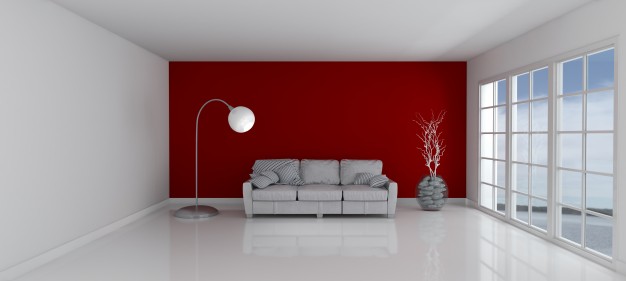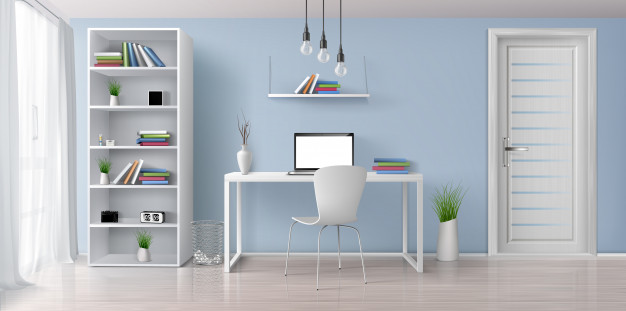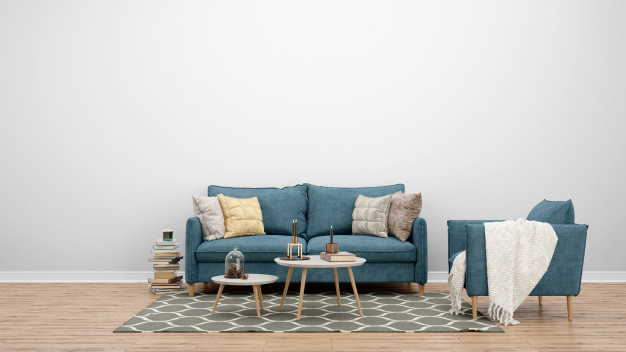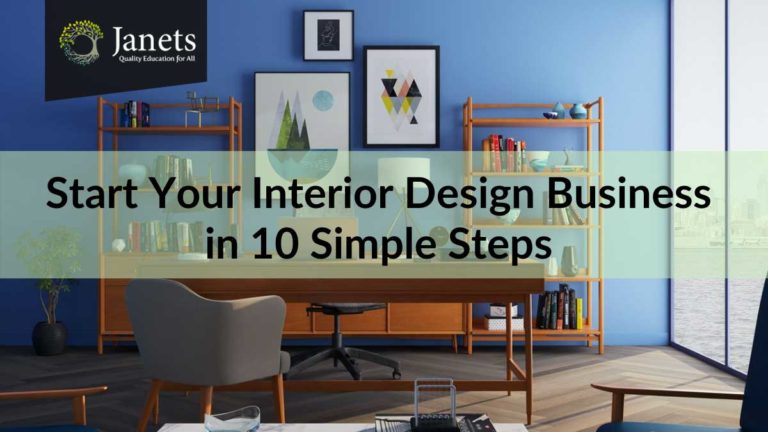Interior Design Business — these three words can turn your life around when they are put together in a phrase. If you want to flourish your creativity in work life, then interior design business is the perfect option for you. The same goes for people who just hate the idea of entrapping their souls on a tedious desk job.
If you can relate to the above scenarios, you should consider setting up an interior design business as your career. Plus, with the growing demand for work from home, this could be the home business opportunity for you to explore. Nonetheless, if you are still not sure, we’re here to help.
Why you should start an Interior design business
Be it kicking off your professional life or switching from a monotonous job — starting a new business can be hesitating. You have to convince yourself first to take a leap of faith before you head onto convincing your friends and family. You can start by looking at some of the perks of running an interior design business:
- You don't need a big office space for starting an interior design service. The whole operation can be managed online from your home.
- You will have the opportunity to be self-employed. That means you will be your only boss — sounds tempting, right?
- You won't need a big investment like other businesses. Setting up an interior business will be cost-effective if you plan and make preparations accordingly.
- You will face challenges every day, which will require your creativity and innovation in action. That is what keeps this line of work interesting for days to come.
- Last but not least — this might be surprising too, you don't really need an academic degree for this business. However, you will need proper knowledge of interior design and how to run this business. Better if you can gather a certificate or two so nobody can question your expertise and professionalism. You can take online classes like this one for extensive knowledge and accredited professional certification: Interior Design and Home Styling Diploma
Before starting a business, you have to understand the ins-and-outs of it properly. Let’s have a quick look at the daily activities of interior designers.

What Interior Designers Do Every Day
Well for starters, interior designers run a pretty normal life like all of us. But on a daily basis, they make everyone’s dreams come true with their artistry. In short —
Interior designers make indoor spaces of home and offices comfortable and functional while keeping it aesthetically sound. They achieve this goal by conducting extensive research on the interior space and balancing them with the respective client’s demands. Then they set up the given area with attention to details like style, light, aesthetics, material, and cost. Finally, they plan how to manage and co-ordinate the whole interior design project, so his/her visions come true.
So, to answer the question of what does an interior designer do, we present you this breakdown of interior designers’ day to day activities:
- Pointing down the objectives of a design project
- Researching and optimising the project
- Combining client's visions with the result of the research
- Coming up with potential ideas and concepts according to the budget
- Collaborating with the client to finalise the design
- Finalising the required materials and equipment
- Assembling a team for the project and co-ordinating it
By now, you should have a clear understanding of interior designers and their line of work. So, are you ready to be one of them?
Let’s move on to the most vital question on hand — how to start an interior design business. We’ll try to answer it using 10 simple steps. After going through them step by step, setting up an interior company to run a design business will seem like a piece of cake.
How to start an interior design business- 10 Simple Steps
1. Polish the Inner Artist for Your Design Work
As your goal is to establish yourself as a professional interior designer, you will need to polish whatever skills you have on creative design. Look for designs by the proven experts in this field and research on their works to see what makes them great. Rather than just replicating what they did, gather inspiration and develop your own style.
You will also need some guidance while doing so. You will need the right path to become a professional designer and establishing a successful interior design business. As mentioned before, online training with recognised professional certificates will enable you to achieve these goals efficiently. You will have the liberty to learn at your own pace from anywhere, anytime. It won’t even hamper your regular study or work time. Take a look at the course below for more detailed information: Interior Designer Skills Training.
2. Establish a Brand for Your Interior Design Business
Don’t confuse high-tier conglomerates or even a prominent interior design firm with the term “brand”. There’s nothing wrong with starting small. But a brand is what introduces your work to people. It’s an essential part of your business. Exclusive features and services of your business, also known as the Unique Selling Proposition (USP), sets you apart from your competitors. It helps you stand out as an up-and-coming interior company. All these are established with the brand, as it’s the face of your design services.
Defining your brand consists of a few key aspects. They are as follows:
A suitable name for your interior design business
The purpose of a unique name is simple — making your brand instantly recognisable. Try to come up with a name that suits your design services and your style rather than picking a generic one.
A logo to go with the name
Whether it’s a plain and simple logo or a sophisticated one — your logo is the brand image. It must not conflict with the type of services you offer. Give some thoughts on it until you finalise.
Find your comfort zone
Interior design has many areas for you to explore. If you want to do the whole routine of designing everything for a project, go for it. Or, you can pick a particular niche that you enjoy working on like planning for a specific room or style. This is limit your working areas and opportunities but it will make you an expert in that niche. Both are standard practices among professional interior designers. So, It’s totally up to you how you want to roll. Just remember, your brand should reflect your visions and your design services.
Research to find the ideal client
Times change, so do people’s tastes. Interior design trends and forms also change with the demand and requirements of people. So, before you start setting up an interior design business and a brand for it, research your potential customers. Find out your ideal clients for the services you may offer. Also, conduct research on market demand and your potential competitors. Apply your findings in building up your brand, so people find it exciting and fresh.
Take your business to the web
Websites are the new catalogue books. It’s the best opportunity to showcase your work and connect with potential customers. Set up a website as a part of the process of defining your brand. Put some of your past works and design ideas on your website.
Tap into social media
Much like the website, utilising social media channels will help you move forward with your brand. This way, people will be able to contact you quickly. You can even increase brand awareness of your design business if you use social media correctly. To make the most out of social media for your business, you can check out this comprehensive course: Social Media Marketing for Business Management.
3. Define a Portfolio
Let’s face it; no one is going to give you exposure until you prove your worth. The best way to bag some projects for your business is to showcase your previous ones. The question still remains — how to get the initial ones. It’s quite simple. Just ask around, get your friends and family to land you a design project. You can also try offering free services to your closed ones, their closed ones, or just random local clients. It can be for a small room, or residential projects with limited space. Forget about the money at the beginning; just think about all the exposure and experience you are getting.
Leaving no stones unturned, you can build a solid portfolio for your interior design business. Just remember, hard work always pays off. So, how small the project may seem, put your heart and soul into it.
4. Specify Your Design Services
Gone are the days of the traditional interior company. Interior designers have been breaking their moulds of conventional business models. They are coming up with new and improved ways to offer their design services. Some famous examples of these services are given below.
E-Design Services
They are alternatively known as online-based interior design service. It’s trending nowadays for ease-of-access, affordability, and the liberty of hassle-free consultation from home. This way, you can target more customers at once, and your customers can avail your service for a rate cheaper than usual services.
Rental Room Styling Service
It is a relatively new service offered by interior designers. With the growing number of people opting for renting rather than buying, interior designing has changed quite a bit. As rentals have more restrictions and bindings, interior designers face new challenges every day while styling these rental rooms. If you are up for taking challenges, this is the perfect area for you to explore.
Home Staging Services
This service helps the realtors and agents by styling and decorating private residences which are up for sale/rent. An interior designer helps to make those houses or flats more appealing to the customers.
Individual Room-Focused Design Service
This service is more niche-oriented, both for the client and the designer. Designers focusing on any specific rooms tend to have their comfort zones around designing for that room. People also go for these services for more expert opinions.
Product Sourcing
Here comes yet another service which you might not have heard until now. Sometimes people know exactly what they want in terms of design, but can’t find suitable furniture or products to go with that design. In that case, an interior designer helps them by sourcing the right products for them. This service allows you to offer additional services on top of your usual ones.
And there’s always the old-school full-house interior design for home and offices. While it is conceptually more traditional than the previous ones, it’s still the most demanding service. So, try to pick yours so your business can find its clients efficiently. You can run a trial phase before fixing on your business model. But it’s better to be done in the beginning when you are still building your portfolio. That will be beneficial for a smooth kick off into the professional design services offered by your interior company.
5. Set the Rate
After fixing on how you will provide your services, you should set the prices. There are quite a few conventional pricing strategies in this industry. We’ll go through them one by one.
- Flat rate is probably the oldest pricing strategy in the interior design business. It means project-based fixed price regardless of the time needed to complete it. This strategy is favoured by the clients as it gives them a crystal clear view of the budget. For the designer, however, this is quite risky. Especially when you are a new designer, you run the risk of miscalculating the time and getting a low price for your hard work and labour. But if you can predict the amount of time needed, this pricing system will get you more clients than any other. It would be great if you can fix the total price calculating a standard rate per hour for your service.
- Hourly rates are a relatively safer option for beginners in this field. It gives you the comfort to work without worrying about your pay. But this method is not so popular among the customers, as the budget and cost remain uncertain.
- Cost-plus is another popular pricing plan among interior designers. Here, you add all the expenses of equipment, furniture, and possibly the human resources behind the project. Then, you will add a previously agreed fixed percentage on top of the costs as your fee.
- A relatively lesser-known pricing method is retail pricing. This strategy entitles you to only charge retail prices for the products and equipment you bought for the project. Clients love this pricing as it gives them the impression of paying no fee for your design services. But the trick here is to use your connections to purchase everything cheaper than the retail price. As you can see, this method depends a lot on your networking. That's why many of the interior designers tend not to go along this path.
You can also make your custom pricing strategy combining the strategies above and more, which is common nowadays in interior design services.

6. Finance and Bookkeeping for Your Business
The interior design accounting process is a vital step toward a successful business. Keep records of every single detail, each of the receipts and manage your accounting books regularly. The easiest way to do it is to hire an accountant who will do it for you accurately. But that might be difficult for a new business with its tight budget. In that case, you can just do it yourself. It won’t be as tough as you may think. With a new business like yours, all you have to do is conduct bookkeeping activities once a week.
You have to be careful while managing this role of a bookkeeper and follow some basic rules. You can check out the online training below for more detailed information on this. It will guide you through the full accounting and bookkeeping process of your business step-by-step. Accounting and Finance Course for Managers.
7. Dealing with Your Clients
Any service depends on its clients to sustain for a long time. When you are offering design services through your business, you should make plans on how you will deal with your clients. Remember, Interior decoration business plan is equally important as all the things we have mentioned before. From receiving a query from a potential client to sealing the deal, your whole process of handling every situation should be pre-planned and precise. This way, you will ensure the client’s experience and the journey with you to be a pleasant one. It will also pave the way for retaining that client
— that is getting projects and recommendations from him/her in the future. The whole process can go like this —
- You will receive a query from a potential client via any medium. It can be a small question or a direct proposal for consultation on a specific project. These projects include designing for residences as well as office spaces.
- Then the first meeting with the person. It's better to talk in person as that ensures a personal touch and a real-time consultation with him/her. But as an alternative, online meetings could work as well.
- After the initial consultation, an executive summary or even a detailed project proposal could be sent from your end.
- The client would then make adjustments if needed and send it back until both of you settle on an agreement. Then the client will finally approve the project.
- Both the parties will sign a contract paper upon agreeing on the proposed design. That is crucial for future reference and legal requirements.
- You will then prepare mood boards, sketches, mockups, and 3D models for your client's approval.
- Then you will put together a team of workers and supervise their work.
- After that, the client will review the end product for you to make final adjustments.
- Finally, both of you will close the project and ask your client for a testimonial of your work. The testimony will be useful in future to showcase your performance.
While this is the standard procedure, you can tweak it according to your need. But always try to follow a framework like this. It’s a vital part of writing a business plan for your interior company. It will help with the company’s growth as time passes by.

8. Marketing Your Interior Design Business
It’s not enough to concentrate only on developing your services. Without spreading the word of your services to the potential customers, your growth as a business will suffer miserably. Marketing is crucial for every business; interior design business is no different. There are several ways you can market your growing business without much effort and money. Some of them are mentioned below:
- Utilise the power of word of mouth. There is nothing more useful for a business than people's satisfaction, testimonial, and referral. Traditional advertisements and other marketing methods may cost you a lot with a lesser return. But people always trust a credible person's opinion. So when someone vouches for you, it won't take much time for your business to skyrocket. Initially, your friends and family can help with spreading your business to their connections and closed ones. Later, work on satisfying people and persuade them to help expand your business.
- Start a blog section on your website and post helpful, informative articles for people to read and learn. This way, you will be able to drive more traffic to your site which will increase your brand awareness.
- Learn and utilise search engine optimisation (SEO) on your blog posts and other sections on your website. Just a little effort here will boost the traffic of potential clients on your site. For a starter's training on SEO, check out this link: Search Engine Optimisation (SEO) Training
- Email marketing is an excellent way for you to connect with your existing clients as well as the possible ones. Make an email list of your clients, subscribers of your website, or any potential contact. Send personalised emails regarding your service as well as helpful information and tips on interior design. It will also help in the long run to build connections with your contacts.
9. Keep Your Connections Close and Your Clients Closer
Elaborating on the email list, we should now focus on building connections and relations. These are vital for any business, as retaining customers and serving potential ones have proven to establish a successful business. So, give your existing clients the top priority by keeping a steady relationship with them and help them as much as possible. You should also be aware of the potential clients from your website, social media, and referrals from your clients and closed ones. But the list of contacts doesn’t end with customers and potential clients only — there’s more!
To run a successful interior design business, you will also need contacts who can help you in product sourcing and finding the equipped workforce you need. These contacts can range from local distributors, traders, decorators, or agencies. Never stop making these contacts, as every little relation in life matters.
10. Always Keep Updating
With the above nine steps, it might seem like the job is done. You’ve set up everything; you’re landing clients and getting paid — everything looks fine. That is where quite a few of the new businesses fail. Never stop working your heart and soul for your interior company. Always update yourself and your design services. Otherwise, you will gradually fall behind others smarter than you. So, if you become successful, retain your success by working even harder. The bottom line is,
That concludes our take on a comprehensive guide on starting an interior design business from scratch. Follow it to your benefit while also following your heart. Concentrate on your determination and combine it with your hard work. You, along with your design business, will surely succeed in the long run. If you want to know more about interior design for your business, you can always dig deeper into professional online training. You can click on the link given below for an advanced diploma in interior design. Best of luck!
Read more blogs
- Why Every Employee Needs Data Analytics Skills in 2024
- Making the Most Out of Team Communication in 2024
- 10 Growth Marketing Strategies for 2024
- Christmas Cooking Guide: 10 Tips for Healthy Diet
- The Ultimate Guide to Healthy Diet During Holidays
- How to Become a Teaching Assistant with no Experience in the UK
- 10 Game-Changing Microsoft Office Hacks That You Must Know
- The Future of Work: How to Stay Relevant in a Changing Job Market
- The Ultimate Guide to Become A Care Worker in the UK
- Boost Your Brand with Ghostwritten Content: The Smart Business Move
- Mastering the Art of the Education-First Resume: Essential Tips and Strategies
- From Classroom to Career: The Transformative Power of Education on Job Prospects
- How To Write A Military Resume: A Complete Guide
- 10 Essential Soft Skills In 2023 and How to Develop Them
- 15 of the Best Remote Working Jobs to Pursue in 2023





 LOGIN/Sign up
LOGIN/Sign up






